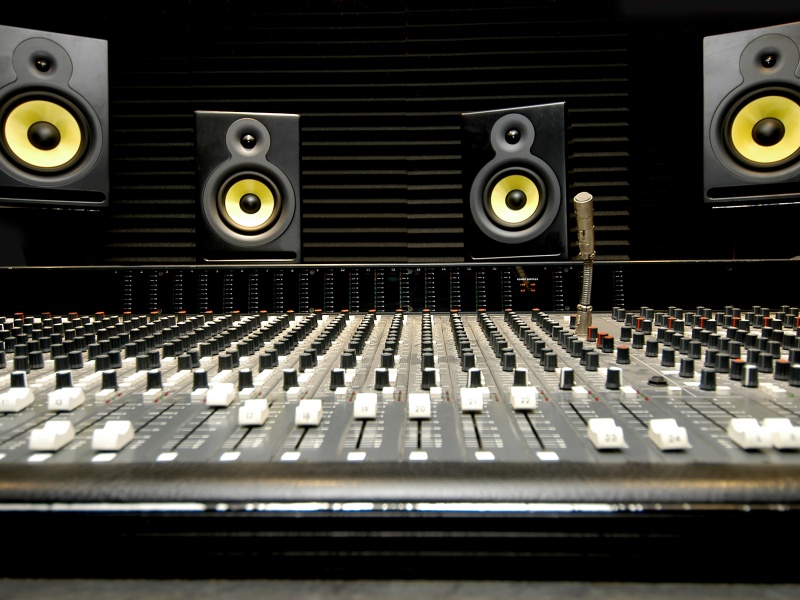
Music studio speakers, or monitors, are in a different category than home entertainment speakers. Buying the latter means listening to “colored” audio designed to make the listener’s experience more pleasing than average. Conversely, monitor speakers produce a flat profile that doesn’t edit the audio. But it doesn’t mean that all studio monitor speakers are the same. Here are five things to consider during your search for monitors for your music studio:
Cost
Whenever you want to invest, perhaps the first thought that comes to mind is the cost. The same idea can be applied when buying monitor speakers.
A decent pair of studio monitors may make you spend about $100. But you can obtain higher-quality studio speakers for a higher price. Still, don’t go over your budget, or you might not have the extra cash for other music studio essentials.
Also, it’s okay to be skeptical when you see studio speakers with low costs. Prepare for a low-quality audio-listening experience when buying cheaply-made monitors.
Shop carefully and maintain due diligence in researching for speaker options. Stay within your budget, but don’t lower your standards because you found cheap studio monitors on the market. You can also check online resources like grooveboxstudios.com to help you compare different models and their prices.
Active Vs. Passive
The vast array of studio monitors can make it challenging for both beginners and veterans in the music industry to choose the best speakers. But you can make your decision-making easier by putting these devices into two primary categories: Active and Passive.
- Active Monitors – Speakers with several built-in features, making them ideal for audio enthusiasts that don’t want to spend cash on extra gear.
- Passive Monitors – Modular units that may require extra equipment for better audio-listening experiences.
Many professional music studios opt to use passive monitors because of the flexibility they bring. You can fine-tune the audio by adding peripherals to the setup to ensure listeners can experience the best possible sound quality from these devices.
Still, it doesn’t mean active monitors aren’t excellent choices. Active models are ideal for music studios that don’t have a lot of space to spare. Make sure to consider the dimensions of the studio while making your choice between active and passive studio monitors.
Power
Don’t make the mistake of buying studio speakers for the sole purpose of listening to different media at maximum volume. Still, consider purchasing high-powered monitors for the full dynamic range.
Studio monitors with high wattage can provide a detailed sound across the board, thus giving off broad dynamic ranges. It means that sound recorders can fine-tune the audio without experiencing distortion. Conversely, cheap monitors tend to have low power, which means that the high and low frequencies become prone to distortion.
For example, listening to music from bands like Westkust may need listeners to feel the audio separation between the instruments and vocals. Listening to these tracks from low-watt monitors might distort the audio at the high and low ends.
Remember, you’re looking for speakers that can replicate a flat audio profile. Bass- or vocal-heavy speakers might not be ideal for a studio setup.
Size
Your new speakers should be a good sonic match for the studio’s space. A large studio with a relatively tall ceiling might need large speakers like floor-standing units. Conversely, small studios, such as spaces equivalent to the size of home offices, might prefer bookshelf speakers.
The speaker size is crucial as you might be listening to the same songs frequently. Remember, audio mixing and recording needs you to fine-tune different aspects of the track. Listening to speakers of the wrong size might create a false audio representation of the sounds.
Still, it doesn’t mean you can’t use bookshelf speakers in a relatively large room. But you might need to purchase other gear, such as a powered subwoofer, to give the smallish monitors enough power to radiate across the space.
Specs
Like other pieces of technology, studio speakers will have specifications that denote their performance and quality. Still, you don’t have to consider every piece of information provided in the spec sheet. Here are some of the most important specs to consider in studio monitoring speakers.
- Frequency Response – Indicates the dynamic range or tones the device can produce.
- Sensitivity – The efficiency in which the speaker can convert power into volume.
- Impedance – The amount of electrical resistance the device presents to an amplifier.
- Power Handling – The recommended strength of the connected amp.
- Material – Denotes the material of the driver (e.g., metal, paper, rubber, or plastic).
Conclusion
Searching for the best speakers for your music studio needs patience, time, and proper research. Let this guide help you obtain the right monitoring speakers that can satisfy your specific audio-listening needs. Follow these things to consider, and you should get the most out of your new speakers.
